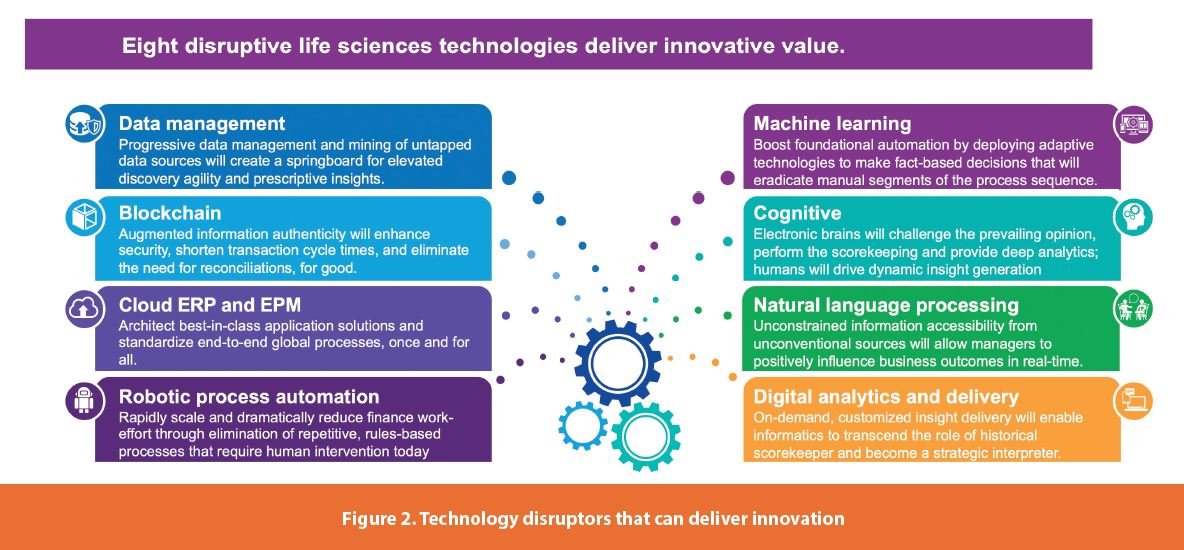Omnichannel Marketing in Pharma
As pharma marketers, who doesn’t want to deliver relevant and consistent content? This is where omnichannel marketing exists.
Media and marketing plans that include integrated messaging across a number of channels - both online and offline - is commonly referred to as Omnichannel marketing.
B2B pharma marketing will feature this heavily.
The Martech Advisor website states omnichannel marketing as “defined as a cross-channel marketing discipline that aligns content delivery across various marketing channels to provide seamless and consistent content experiences across the buyer’s journey and beyond.”
Subscribe for marketing insights via email
Omnichannel marketing is based around the fact that our target audiences in pharma are not bound to a single channel, platform or medium. Those audiences will read physical magazines, visit a range of websites (owned and earned) and engage within both physical and online communities. They’re everywhere.
And those audiences are also low on time and patience and want to make purchases and gather information there and then, reducing waiting times for whatever they are waiting for. Pharmaceutical organisations are required to be there and then, but can gather feedback from those customers instantly.
So to achieve an omnichannel marketing experience… channels and messages need to be aligned to make the most of every opportunity, and benefit from the ever-changing and ever-demanding customer.
OMNICHANNEL MARKETING IN PHARMA
Generating new business in B2B pharma has always been led by the sales representative. But as the channels increase, and alongside, the adoption of those channels by those working throughout the pharma supply chain, the representative-led sales model is no longer viable. Which is why the omnichannel approach has become popular.
Digital is featuring more and more within pharma marketing plans and therefore seamless experiences are emerging, that not only caters for the marketing channels a pharma marketer might adopt, but will also include the sales representatives themselves, their promotional materials and their communications.
So whether you’re a big pharma organisation looking to address healthcare practitioners or in the B2B sectors looking to address R&D, an omnichannel approach is likely to provide the return.
1. INTEGRATE PHYSICAL AND ONLINE
This is a common theme throughout this article, and should not be taken lightly. Throughout the entire pharma supply chain, all the way through to big pharma and healthcare, marketers will need to cover both digital and physical environments.
Pharmaphorum, in this article, elaborates: “Communicating complex health information across channels, demographics and psychographics is as challenging as ever. As collaboration and coordination become part of the new health marketplace, pharma brands have to clearly and credibly demonstrate how they are partners in care. … The answer isn’t more information when patients are already bombarded with packets of discharge paperwork, lists of medications and a stack of new prescriptions after a diagnosis or treatment. Rather, the answer is, by thoughtful design, to use the myriad of technologies to reach more people who are not health literate but who can learn through more intuitive interfaces, competitions, or interactive platforms. Health literacy is far more than just being able to read the label of a medicine bottle. It is about knowing where to go for health information and then understanding and making use of that information, adhering to a treatment plan, and proactively managing health and wellness.”
2. PUT THE TECHNOLOGY IN PLACE
To be able to provide this return, however, requires a marketing system that is able to manage campaigns, as well as provide full integration with other essential systems within a pharma technology stack, such as a CRM. This is regardless of the B2B or B2C audience. And let’s be honest, most pharma marketers see their priorities sit elsewhere rather than successfully integrate and manage all of their marketing technologies.
But things are getting better and digital technologies are being used more and more throughout the entire supply chain. 24/7 virtual care is becoming common, with AI enhancing drug development further down the chain - patients, physicians and the manufacturers are all becoming more empowered in their roles because of technology. This is the same for marketers and how we can connect those channels to create the omnichannel experiences required to effectively connect with our customers and clients.
3. EFFECTIVELY CREATING CONTENT
Any pharma marketing strategy will require content for the message to be carried to its intended audiences. But as we’ve previously looked at on this blog, the challenges that pharma marketers face are significant - we list 10 of them in this post on content challenges, but there are more again. An omnichannel approach can only work providing the various content is created for the various channels, for that varied audience.
You will, however, have a range of suitable content options at your disposal to be able to reach those audiences, in those locations and on those devices. A content production programme is required to be able to connect with your audiences on an on-going basis. More often than not, pharma content will need to be created by those other than the marketers themselves - requiring input from start to finish from subject matter experts, not to mention legal and compliance experts. Content creation can be a huge blocker to scientific and pharma organisations that do not have efficient content programmes - this is for those focusing on channels as well as those favouring omnichannel.
4. ACCESSING AND HARVESTING THE DATA
I think most pharma organisations will be conducting some form of omnichannel marketing without really knowing it. Whether the marketing team runs event-based campaigns after leads are created from a trade show or whether certain website pages trigger automated emails, omnichannel will be present. However, the lack of formal structure and direction means that this sort of activity will not really generate gains or competitive advantage on an organisational level.
If the pharma organisation is at this level of omnichannel maturity, begin with the data - ensuring that the processes are in place at the foundations to be able to up the ante when needed. At least then, understanding the current state - pharma marketers can identify what is required of them to build and maintain an omnichannel strategy in the future. Perhaps the first step to achieving this is to align the marketing activities with other departments and aim for those senior representatives - perhaps from data, IT, legal - to be brought into the programme of setting up a new customer-centric to approach to the organisation. Going back to the foundations is a valuable and necessary exercise to undertake, regardless of the current mature state of the omnichannel marketing programme.
5. MAPPING CUSTOMER JOURNEYS
An omnichannel approach requires you to know the journeys that your users are likely to take to get from one state to another; from a website visitor to lead and from lead to customer. A customer journey map is a representation of every touchpoint your customers have with you. To be able to connect the channels that your audiences might engage with you, you need to map them and understand the various motivations and feelings at each touchpoint. (Similar to when we have discussed buyer journeys and relevant content on this blog before.)
This is a task that will help to tell the story (at each stage of the journey) of a customer's experience with your organisation which will point to the areas where the omnichannel focus is required. It will also, as a secondary function, tell you about the channels that your audiences might be using which are not yet optimised.
6. CREATE ONCE, PUBLISH EVERYWHERE
COPE stands for “create once, publish everywhere” and is a technique used to publish messages across all communication channels simultaneously. Within an omnichannel approach, COPE is important on two fronts: (1) It allows you to effortlessly promote content on all of your owned channels to keep testing whether such content pieces are relevant for those channels, and (2) it provides adaptive content for the recipients wherever they are: their context, their moods and their goals.
Omnichannel requires that you know your target audience well to be able to operate on preferred channels, but that doesn’t mean that other, perhaps more unconventional channels, will not be adopted in the future. Create once and publish everywhere to keep yourself open to all opportunities and expand your reach.
7. ENSURE A SINGLE KPI SYSTEM
We’re moving on a little now (even though we have a lot more to discuss in this omnichannel marketing guide in pharma) and have potentially introduced more channels and distribution opportunities. With those additional channels come additional metrics. But don’t let this change your KPIs and tracking and reporting processes.
Your KPIs shouldn’t change - stick to your original marketing metrics and do not over-complicate. Your marketing strategy will still serve an organisation-wide goal - do not let a change in tactics and channels affect your focus. You can find the six metrics that do which will determine if your marketing campaigns are generating a return on investment here.
8. PERSONALISATION VERSUS LOCALISATION
Personalisation is the goal of most marketing messages. We know that a personal touch is more likely to result in a positive experience for the user rather than a non-personal one-size-fits-all approach. The more personalised content and touchpoints you create – the more loyalty you earn which leads to a rising amount of prescribing and sales. In the global pharma landscape, we are required to go a step further and provide those content experiences to region-specific audiences. Can you do both? If so, you are adding layers to the content production and approval process. Consider this before you create your omnichannel strategy and which should take priority?
The smaller the permissible interval between product launch and its localised versions, the more integrated your localisation must be into the overall content process. You don’t want your localised content lag behind the product launch date, for example.
9. DEVELOP INTERNAL EXPERTISE AND COMMUNICATION LINES
Pharmaceutical marketing strategies such as omnichannel marketing involves a ton of moving parts. The latest technologies, experience platforms and other marketing software - not to mention new marketing approaches such as omnichannel - require new skill sets. Not to mention a functioning team for this skilled workforce to function and thrive, and this extends beyond the traditional marketing function.
Leading omnichannel organisations are looking for more innovative and sophisticated capabilities to make seamless experiences - that can connect both digital and physical environments, which in itself is not easy - a reality in today’s ever-changing markets. I think all of the successful pharma organisations running multichannel strategies have the skills as well as those skills and the expertise on hand when needed. Culture is key.
10. OMNICHANNEL MASTERY - DISNEY
PMLive, in this article, discusses Disney’s omnichannel strategy at length. “It has a stunning mobile-responsive website where users can buy Disney-branded merchandise, purchase Disney movie tickets and subscriptions, and most importantly, book holidays to one of the Disney theme parks. After booking a holiday on the website, users can download the ‘My Disney Experience’ app to plan every detail of their trip, from accessing real-time wait times and parade showtimes to using the GPS-enabled map to explore the resort and locate restaurants and other attractions. Furthermore, they can use the app to purchase theme park tickets, browse restaurant menus, make dining reservations and even start the hotel check-in process.” Motivated yet?
OMNICHANNEL - BECOMING CUSTOMER-CENTRIC
Remember, this isn’t a digital-only sector. As healthcare and pharma professionals slowly use more and more digital channels, physical still holds it own. You will need to invest in other channels such as advertising in the relevant pharma media, but you will need to be consistent with what you put out on digital channels.
Yes, this can be costly, but you will reduce customer acquisition costs in the long-term. Because you will be interacting with your target audience on their terms - on the channels they prefer which will invariably result in an increase in customer engagement and conversion.
You might not get it right right away but measure and fine-tune until your channels are fully optimised. As marketers, who doesn’t want to deliver relevant content?



